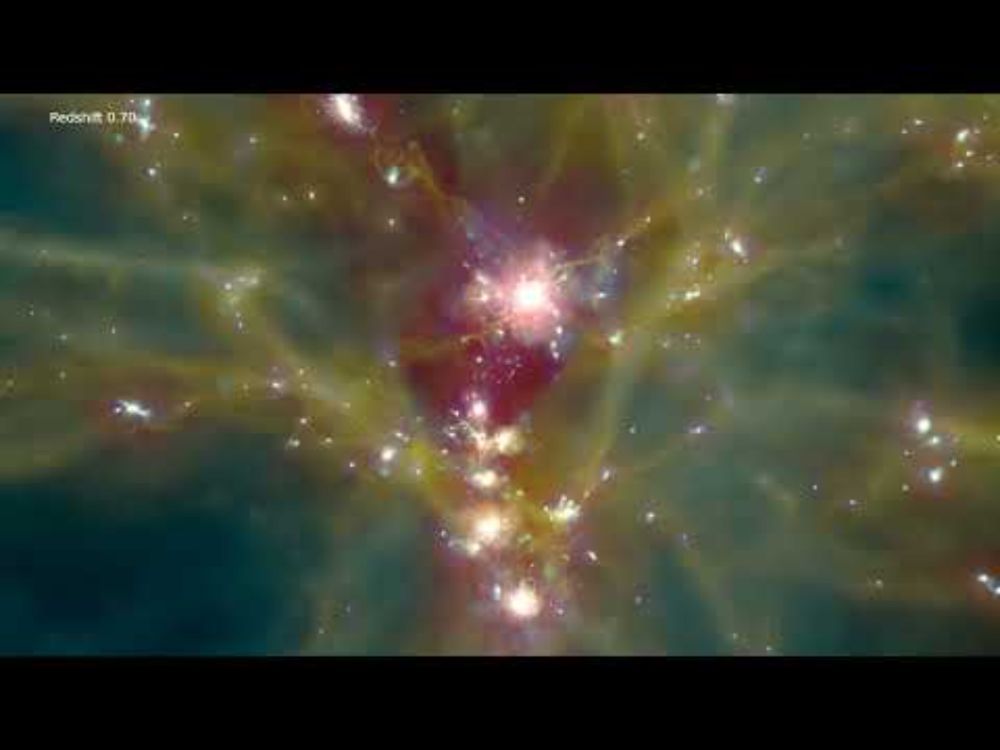
Digital art with a circular nebula in the center colored pink and blue. On top is a bird with an orange breast - about the same size as the nebula.
Happy LGBTQinSTEM Day!! I just ordered a pin for myself and a pin for my trans femme partner who is also called Robin... I hope she never gets sick of my robin themed cards and gifts... Like this card I painted digitally with the robin's egg nebula. 🐡
19.11.2025 04:15 — 👍 6 🔁 0 💬 1 📌 0
LOVE IT!
18.11.2025 01:14 — 👍 2 🔁 0 💬 0 📌 0
I look forwards to seeing what the Vera C. Rubin observatory will help reveal about the universe.
Here is a timelapse (condensed into 30s) of my artwork from the software I use, Procreate (on ipad). #sciart
18.11.2025 01:12 — 👍 5 🔁 0 💬 0 📌 0
In June, @harvardplatestacks.bsky.social held an event celebrating a new U.S. quarter honouring Dr Vera Rubin. Her colleagues and granddaughter shared stories: Vera was not only an amazing scientist, but she was also warm, down-to-earth, loving, curious, and an advocate for women astronomers. (4/5)
18.11.2025 01:12 — 👍 3 🔁 0 💬 1 📌 0
Dr Vera Rubin changed the way we view the universe. Her meticulous observational work showed that galaxies were rotating faster than expected. Her work convinced scientists that dark matter must exist, and that there’s far more of it than regular matter. 🌌 (3/5)
18.11.2025 01:12 — 👍 0 🔁 0 💬 1 📌 0

Trifid and Lagoon Nebulae | Rubin Observatory
Get a Rubin's-eye view of the Trifid and Lagoon Nebulae
The inspiration image was created in May 2025 and combines 678 separate images, allowing us to see the faintest details. The picture shows the Trifid nebula (top right, blue) and the Lagoon nebula (central, pink). You can read more about them here: rubinobservatory.org/news/rubin-f... (2/5)
18.11.2025 01:12 — 👍 1 🔁 0 💬 1 📌 0

digital art with an orange, yellow gaseous background, a central pink elongated nebula, and a top right pink and blue circular nebula. Lanes of dark brown dust clouds are across the image.
New frontiers 🔭🎨
This art was inspired by one of the first images released by the Vera C. Rubin Observatory.
The Rubin Observatory will capture images of the entire sky every few days using the 3200 megapixel LSST camera, allowing astronomers to identify and study targets that move or change. (1/5)
18.11.2025 01:12 — 👍 20 🔁 2 💬 1 📌 0
Thank you Jonathan for your decades of work shaping such an amazing program! Very cool to think about/see how many people's lives you've influenced.
15.08.2025 04:52 — 👍 5 🔁 1 💬 1 📌 0
Wowowow! That was quick! These look incredible!
11.06.2025 18:45 — 👍 1 🔁 0 💬 1 📌 0
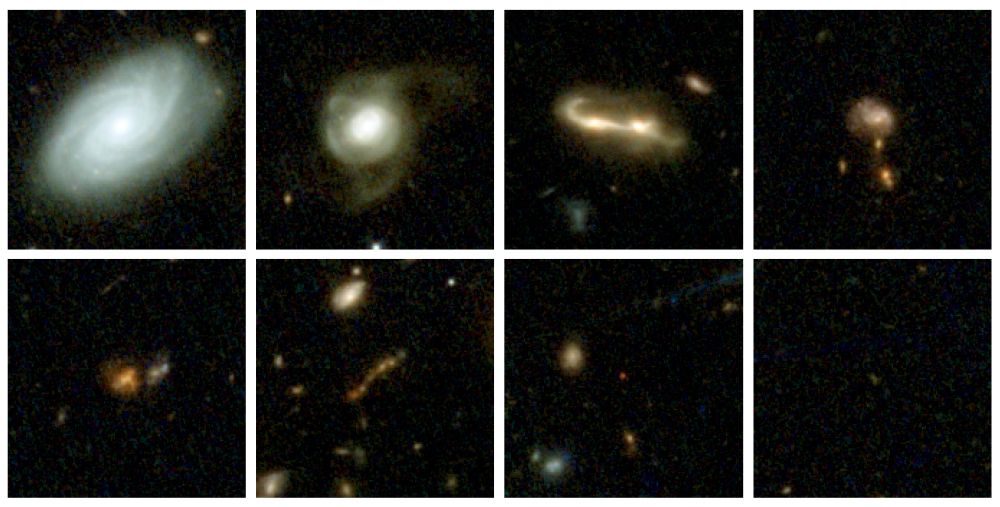
It's finally here! We've just released all of our COSMOS-Web images and catalogs, along with an interactive viewer where you can explore the data! Check it out at: cosmos2025.iap.fr
05.06.2025 15:34 — 👍 14 🔁 5 💬 1 📌 1
You can find a list of Christian's publications here: orcid.org/0000-0002-88...
Congratulations, Dr. Groeneveld!
05.06.2025 15:11 — 👍 1 🔁 0 💬 0 📌 0
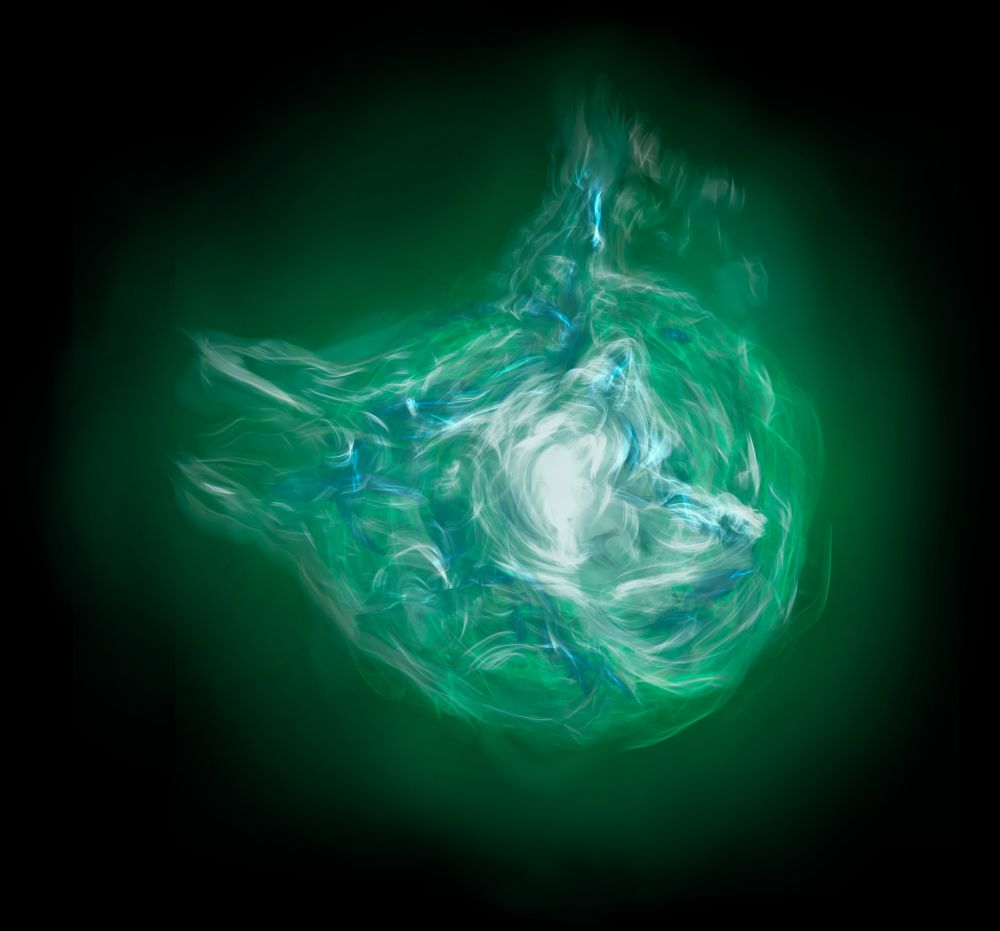
Digital artwork depicting the Perseus galaxy cluster as a swirling, abstract formation. A bright white core is surrounded by turbulent, filament-like structures in shades of green, blue, and soft white, suggesting the presence of radio halos. The outer edges blend into a glowing green aura, evoking the sense of motion and energy from cosmic turbulence. The image symbolizes the invisible structures seen in low-frequency radio observations of galaxy clusters.
Christian’s research focused on the Perseus galaxy cluster. They confirmed two giant structures: a radio "mini-halo" around the central galaxy, and a much larger "giant radio halo" over a million ly! These halos likely come from turbulence caused by past cosmic mergers, which re-energize particles.
05.06.2025 15:11 — 👍 1 🔁 0 💬 1 📌 0
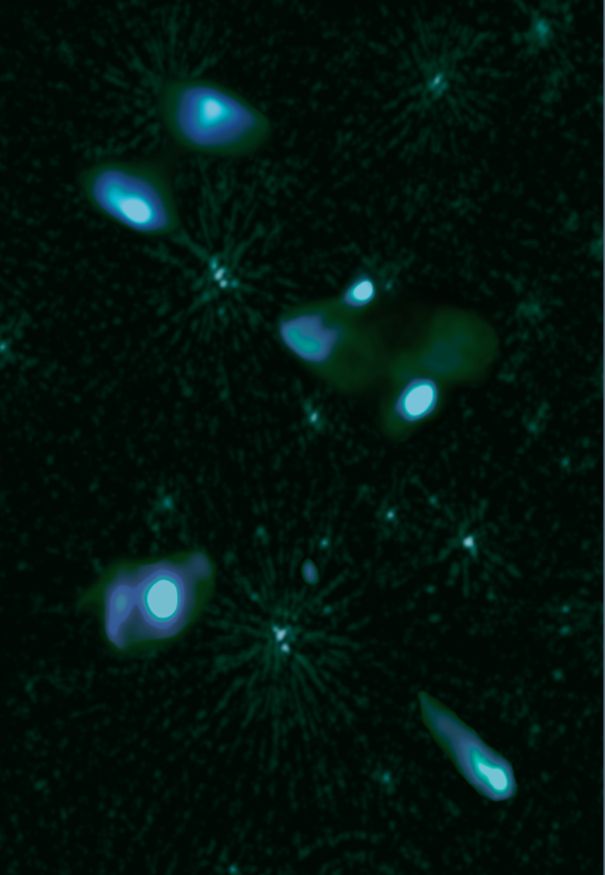
Back cover of a PhD thesis featuring a background of real LOFAR decameter-wavelength radio data in dark green tones, overlaid with four bright blue-white objects representing active galactic nuclei (AGN). These AGN appear as luminous, irregularly shaped sources with glowing cores and faint jets, distributed across the frame. The background is textured with starburst-like calibration artifacts centered on numerous faint point sources.
Studying space at such low frequencies is incredibly challenging because the Earth's ionosphere distorts the incoming radio waves. Christian helped develop a new calibration technique that enables higher sensitivity and resolution imaging at these wavelengths.
05.06.2025 15:11 — 👍 1 🔁 0 💬 1 📌 0
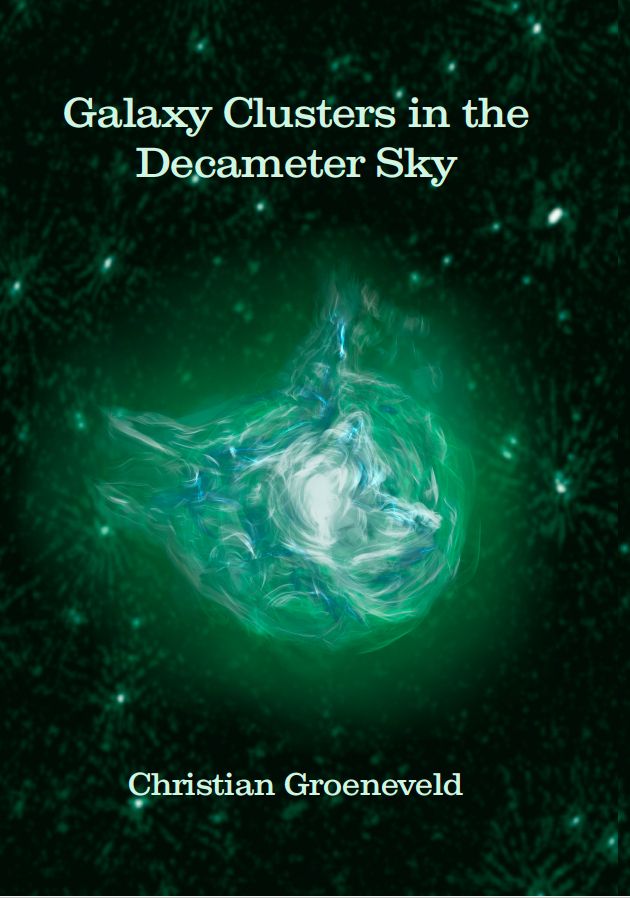
Cover of a PhD thesis titled "Galaxy Clusters in the Decameter Sky" by Christian Groeneveld. The background features real decameter-wavelength radio data in glowing green tones, filled with faint point-like sources. At the center is an abstract, swirling digital illustration representing the Perseus galaxy cluster, with luminous filaments and a bright central core, evoking the turbulent energy of radio halos.
Today, my colleague Christian at Leiden University successfully defended his PhD thesis, "Galaxy Clusters in the Decameter Sky"! In it, he mapped the sky at a relatively unexplored range of radio frequencies—10–30 MHz—using the LOFAR telescope. I had the honour of designing Christian’s thesis cover!
05.06.2025 15:11 — 👍 5 🔁 0 💬 1 📌 0
These are great! I would put prints of a set up in my office.
28.05.2025 13:27 — 👍 2 🔁 0 💬 2 📌 0
This is so great 😍😍
13.05.2025 16:41 — 👍 1 🔁 0 💬 0 📌 0
My dms aren't working so I sent an email
26.04.2025 16:17 — 👍 0 🔁 0 💬 0 📌 0
(my dms aren't working so I sent an email)
26.04.2025 16:16 — 👍 0 🔁 0 💬 0 📌 0
Hi Bunny! What a fabulous idea - it would be an honour to collaborate. I'll DM you.
26.04.2025 14:57 — 👍 1 🔁 0 💬 1 📌 0
Aww thanks for the sweet words! I'm so happy you like my art. Yes, please repost with credit :-) 🙏
08.04.2025 12:17 — 👍 0 🔁 0 💬 0 📌 0
I was asked to give my social media accounts when applying for my work visa last fall.
08.03.2025 02:12 — 👍 0 🔁 0 💬 0 📌 0
I hope so too Susan. I think too often scientists try to remain applitical and (are told to) "stick to the science". I try to remember that science is (and has always been) political and we scientists are also (first and foremost) humans.
06.03.2025 03:57 — 👍 1 🔁 0 💬 0 📌 0
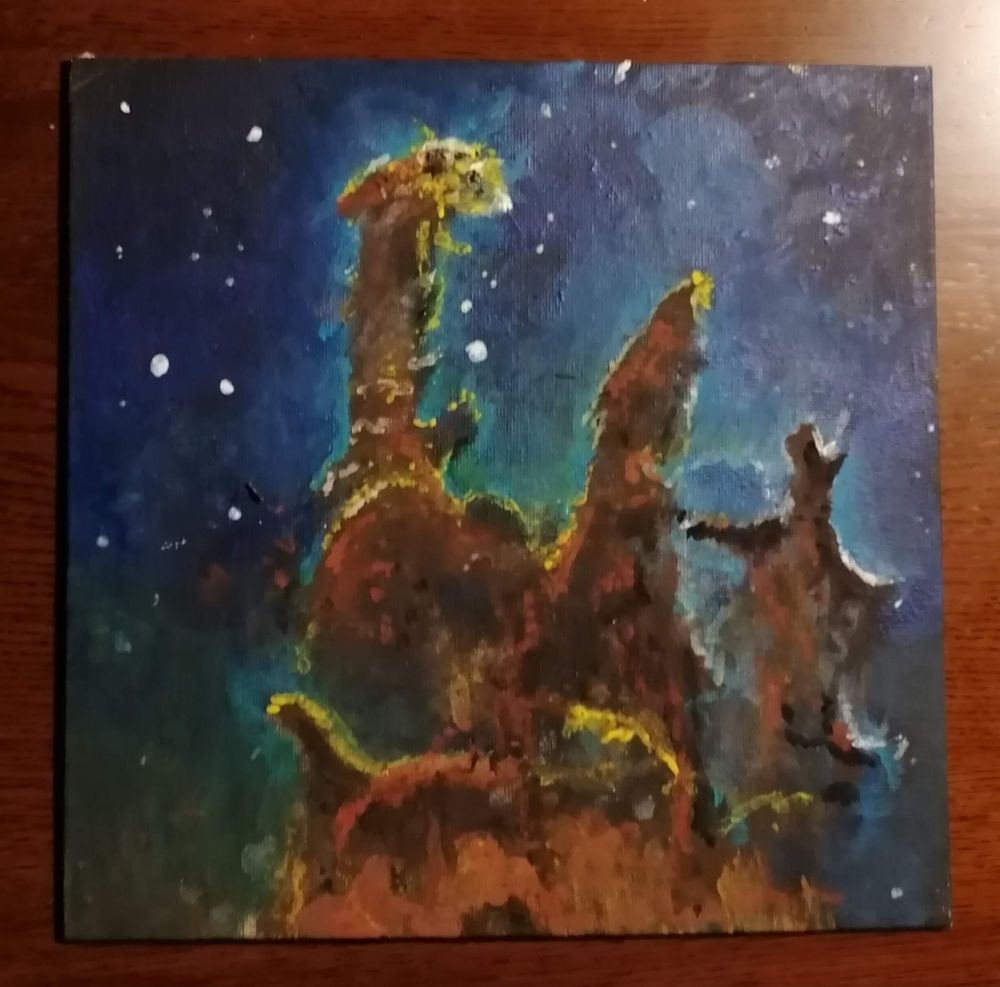
painting of the pillars of creation in visible light. The 3 pillars are dark brown and block the light.
The pillars of creation were first made famous when imaged by the Hubble Space Telescope in 1995 (and again in 2014) in visible light - which I have previously painted. The near-infrared view from JWST helps us peer through more of the dust - revealing many more stars that are forming within.
27.02.2025 02:16 — 👍 9 🔁 0 💬 0 📌 0

painting of the pillars of creation in visible light. The 3 pillars are dark brown and block the light.
The pillars of creation were first made famous when imaged by the Hubble Space Telescope in 1995 (and again in 2014) in visible light - which I have previously painted. The near-infrared view from JWST helps us peer through more of the dust - revealing many more stars that are forming within.
27.02.2025 02:16 — 👍 2 🔁 0 💬 0 📌 0
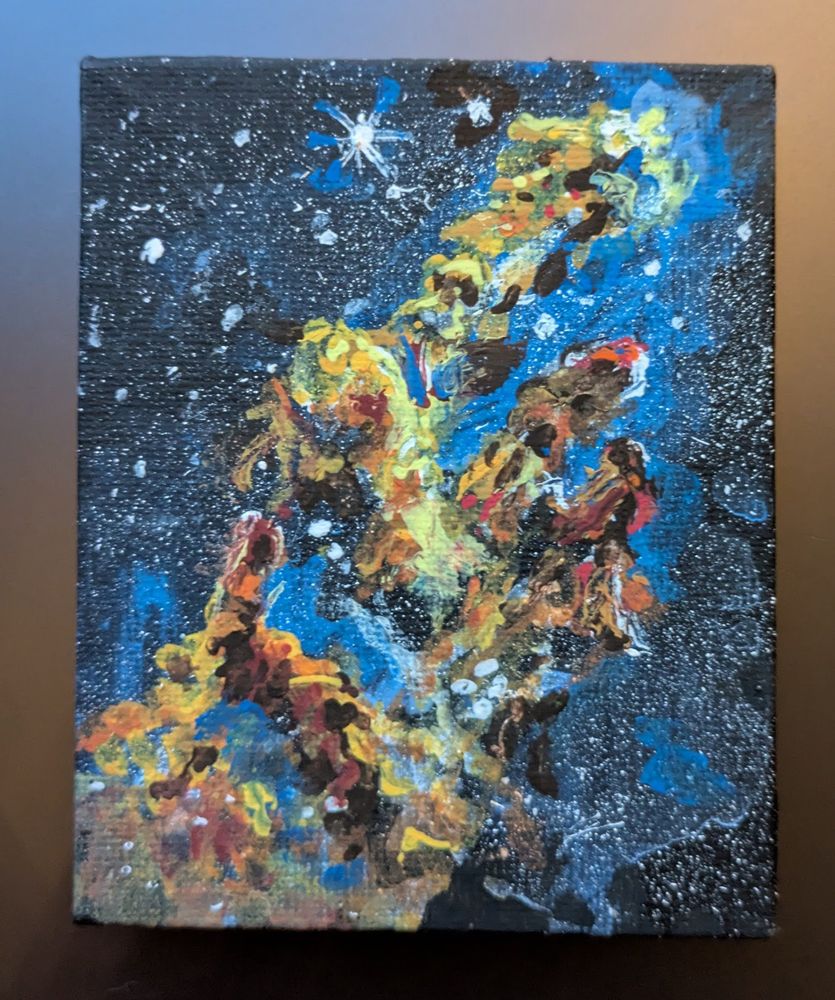
painting of the "pillars of creation". The three pillars are brown, but also have red and yellow colours
My mini painting of the Pillars of Creation was inspired by the JWST NIRCam image. This region of active star formation lies ~6,500 lyr away. Glowing red lines near the edges of some pillars reveal where stars are ejecting material as they form. 🔭🧪 🎨
27.02.2025 02:16 — 👍 48 🔁 9 💬 7 📌 0

painting of the "pillars of creation". The three pillars are brown, but also have red and yellow colours
My mini painting of the Pillars of Creation was inspired by the JWST NIRCam image. This region of active star formation lies ~6,500 lyr away. Glowing red lines near the edges of some pillars reveal where stars are ejecting material as they form. 🔭🧪 🎨
27.02.2025 02:16 — 👍 12 🔁 2 💬 1 📌 0
Hi bluesky 👋🏻
We're a brand new 501(c)3 non-profit that works at the intersection of neurodiversity 🧠 and space science 🚀
If you're neurodivergent and in space aligned fields/interests, then we are here to help you!! FOLLOW US here so you're the first to know when we roll out our programs!
13.01.2025 17:12 — 👍 6 🔁 2 💬 1 📌 0
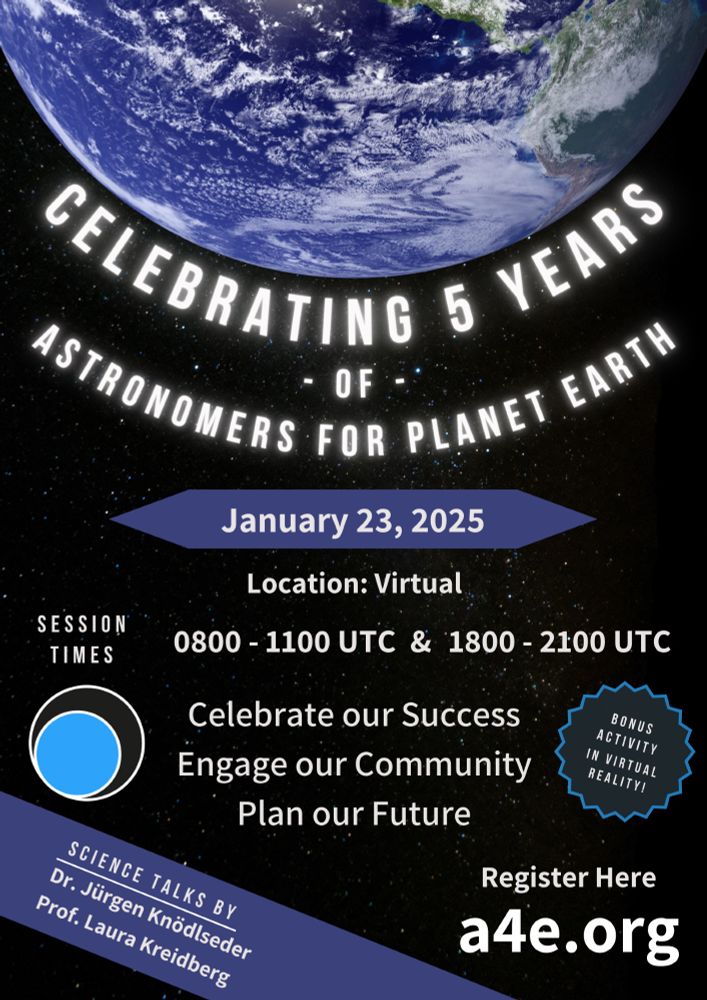
Dear all! Come celebrate A4E's 5th Anniversary!
Thursday, January 23, 2025, UTC 0800-1100 & UTC 1800-2100; Zoom + Spatial VR.
Will you discuss with us where A4E can be in another 5 years?
All info and registration at astronomersforplanet.earth/5th-annivers...
20.12.2024 17:35 — 👍 7 🔁 4 💬 0 📌 2
YouTube video by Audio Universe
Galaxy Formation - A Sonification
...and here's the sonified video of a prototype COLIBRE test simulation - conveying star formation and cosmic thermodynamics with sound! More info in the YT description... 🧪🔭⚡ ⚛️🎵🐡 #extragalactic #musicianfeed #philsci #art #stellarastro #cosmology #EduSky
youtu.be/4BPFHTVMmbQ?...
13.12.2024 16:36 — 👍 29 🔁 3 💬 1 📌 1
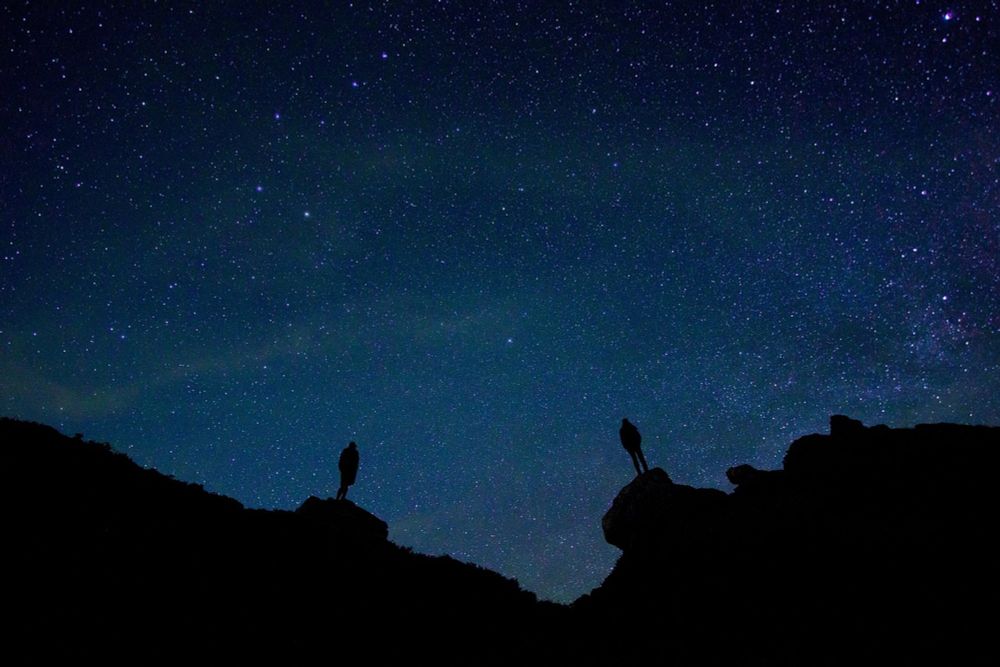
The sound of silence: how sound brings space to life
The vacuum of space is famously silent, but what if you were able to use sound to help you visualise the Universe? What would a black hole…
Check out this article from STFC about our sonification of astronomical data, and beyond! including a new sonification at the end - perceive multi-scale information about galaxy formation in our cosmological simulations... 🧪🔭⚡🐡. medium.com/big-science-...
13.12.2024 11:22 — 👍 64 🔁 14 💬 2 📌 3
An inclusive arts community in the Blackstone Valley. Arts & Culture wing of Open Sky https://openskycs.org
50 Douglas Rd Whitinsville Massachusetts
Navy combat veteran and retired NASA astronaut. Husband to @GabbyGiffords.bsky.social. United States Senator for the great state of Arizona.
Professional tree enthusiast with a PhD about it.
Not being super professional here.
I make botanical pride pins.
canopyrobin.com/links
(they/them)
Science + Visual Communicator
Past: SciAm, Scholastic, Yale U Press
🔸 https://glendonmellow.com
——
SciArt Feed Admin (No AI/NFTs)
🐡 https://bsky.app/profile/flyingtrilobite.com/feed/aaadepeaxdboc
——
🦋 Elder # 18,744 | 12Apr23
🚴🏼♂️ Cyclist
🎨 BFA Hon
Artist in The Netherlands
☁️ Reflecting on our state of mind & the passage of time.
🕳️ Black holes, spirals and the elements.
🌊 Organizing & visiting exhibitions
www.annemarieslobbe.com . instagram.com/annemarieslobbe
Postgraduate currently researching prehistoric whale teeth and cat legs | paleozoological modeller and scientific consultant | Work featured in Forgotten Bloodlines: Agate and Ecos: La Brea
Pronouns he/him
Email: alexanderjames2000@gmail.com
Australian sculptor and biological model maker based in Québec. He/him. Anti AI/NFT
Sincere, but not serious.
https://linktr.ee/HellbenderMuseum
“An artist revealing the infinitesimal.” NYC based creative.
https://stevengawoskiart.com/
Assistant producer for factual TV (Earth, Walking with Dinosaurs 2025, Evolution), science communicator, paleoartist, paleontology enthusiast (she/they) 🏳️⚧️
https://kakapojay.com/
Chicago-based paleoartist. He/him. Email for commissions/inquiries at liam_elward@yahoo.com
Paleontologist PhD & Medical Scribe
#BirdGlamour, #NameThatTrack, #ichnology, bird & dino tracks.
Fellow of Royal Canadian Geographical Society.
She/Her.
Views mine.
LOTS of Ash pics!
Space Artist, sky observer and photographer. Processor of space images. Interested in Astronomy, Planetary Geology, history and in what the future may bring.
Coffee drinking, year-round-plaid wearing space dad. Astronomy professor in Seattle. Searching for ET, caring for humans.
https://jradavenport.github.io
The nation's oldest continuously published daily college newspaper. thecrimson.com
The largest collection of glass plate negatives of the night sky, preserving a century of history of the Universe that was created, studied and curated by pioneering women in science since 1880. Apart of the Center for Astrophysics | Harvard & Smithsonian
Home of Astrophotography since 2011.
Planetary Astronomer on #TeamAsteroid; Gedankenband member/guitarist; “Surprisingly nonchalant” according to Wired. He/him הנני 🌻
Work Output: https://scholar.google.com/citations?user=aGVsk3IAAAAJ
Play output: https://andyrivkin.bandcamp.com
Marine mammal & sea turtle research - but interested in many things! Usually my own opinions; telljack@dfo-mpo.gc.ca
astrophysics PhD candidate at Caltech || really likes rocks, X-rays, galaxy clusters, and bad poetry || she/her
Astronomy PhD. candidate at UChicago.
X-raying galaxies since 2021
she/her











